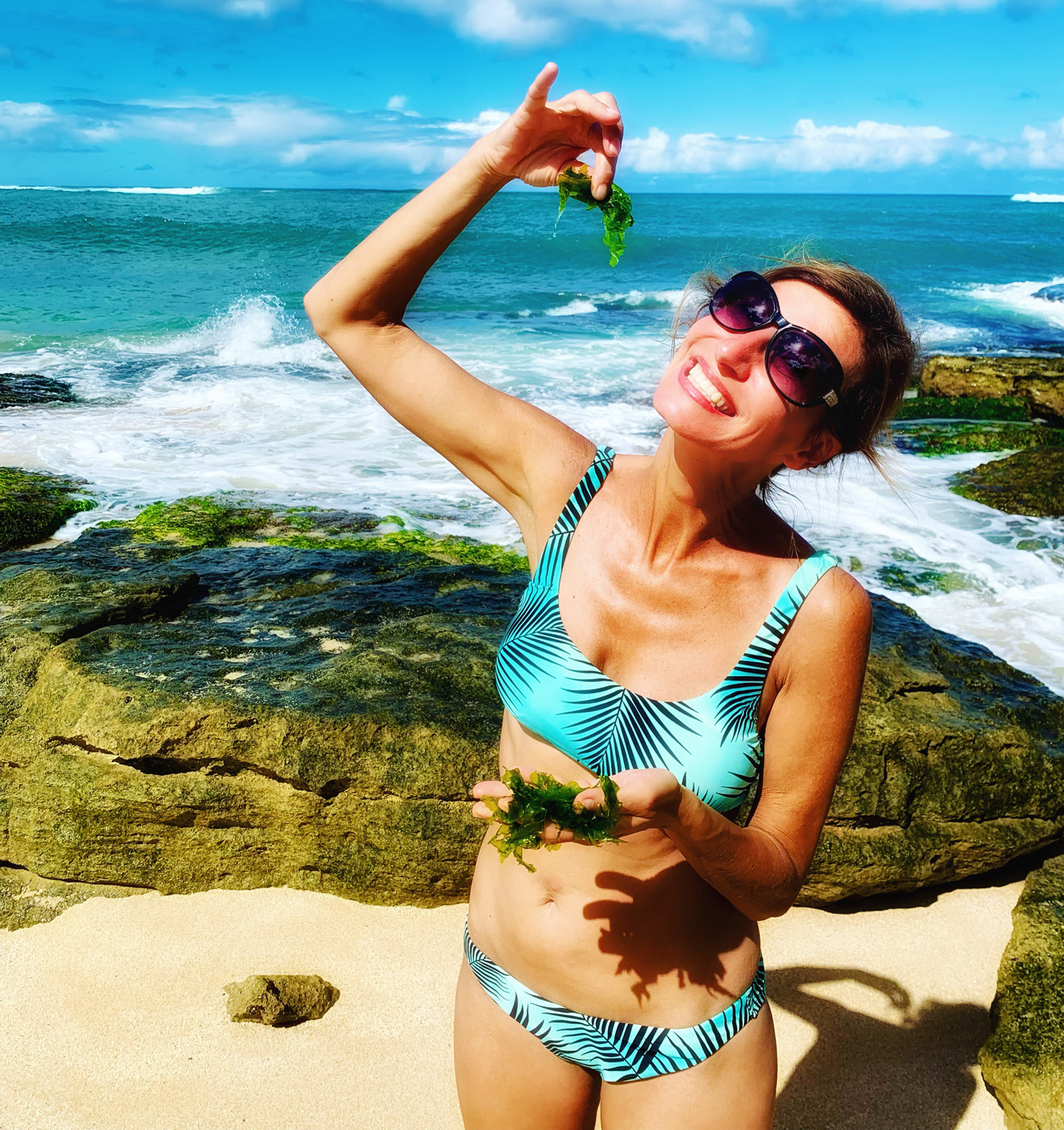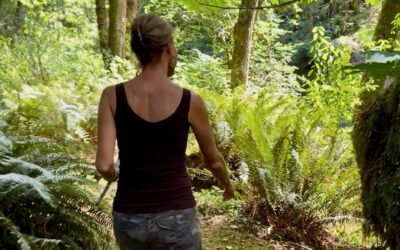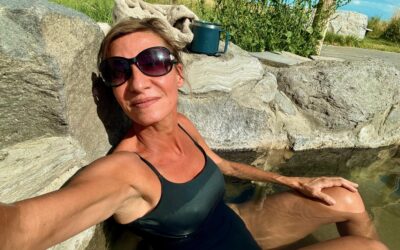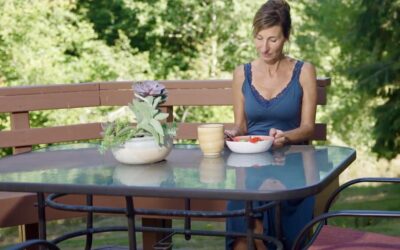A True Superfood for Healthy Living
If you’ve never tried seaweed, you are in for a treat! It is one of my favorite wild foods and has outstanding nutritional value. Seaweed is not only an excellent source of iodine, but many varieties also contain trace minerals and active compounds that fight neuroinflammation, weight gain, blood sugar issues, cancer, high cholesterol and more. It truly is a superfood in its own right — and it’s free for the picking! Seaweed is an outstanding addition to anyone’s diet, save for those who have been diagnosed with Hashimoto’s disease — in this case, steer clear of seaweed or any other food high in iodine as it may exacerbate the disease.
Each variety of seaweed has its own special characteristics, flavor, and medicinal/culinary use. I have included three examples below to get you started from my new book, The Forager’s Guide to Wild Foods: Edible Plants, Lichens, Mushrooms, and Seaweeds.
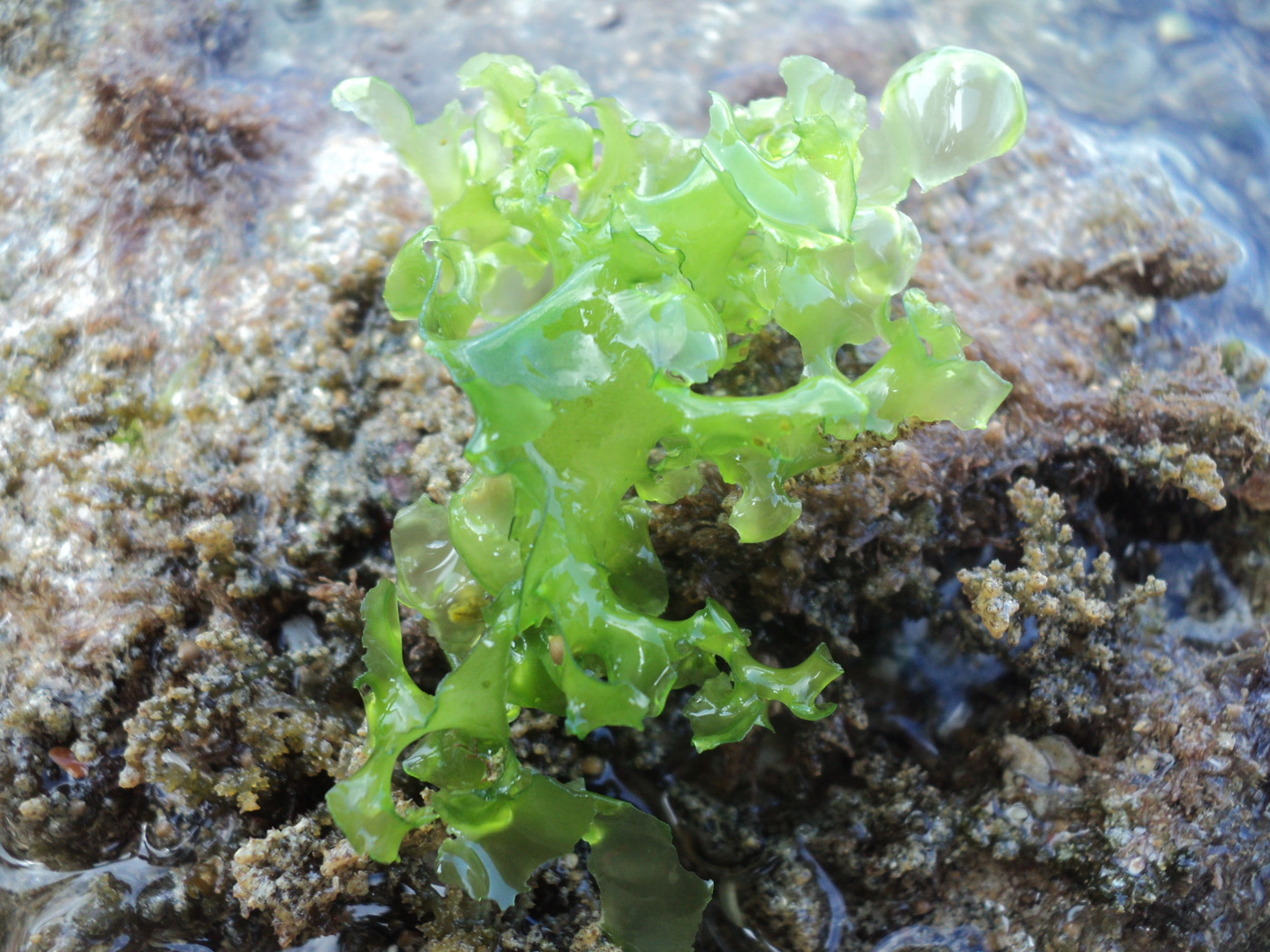
Sea Lettuce
Sea lettuce or green laver are the common names given to seaweeds in the Ulva and Monostroma species. It’s commonly found in areas with high nutrient run off and can survive in both salt and brackish water. Sea lettuce is higher in protein than most seaweeds, but it doesn’t have as high of a vitamin profile. Research has shown that sea lettuce has strong antimicrobial, antiviral, anti-tumor, and anticoagulant properties.
Growing in water up to 30 ft (10m) deep, it can be found on rocky substrates anywhere from low to high tide lines. The fronds are dark or bright green in color — you can see me munching on it in the photo above! Harvest in the spring and summer and enjoy as you would any leafy green. It also makes a delicious fermented kimchi as you can see from the following recipe.
Recipe. Sea Lettuce Kimchi: Ingredients: 1 cup each of sea lettuce, cabbage leaves, and bean shoots, 1 tsp. each of ground ginger and raw sugar, 2 tsp. fish or oyster sauce, 3 tbsp. red chili flakes, 3 sliced spring onions, 5 cloves garlic, 1⁄4 cup of salt, water. Slice the sea lettuce and cabbage into 2-inch strips and place in a large bowl. Add salt and massage into strips for 10 min. Cover with water and weight down with a plate. Leave it for 2 hrs. and then rinse thoroughly.
To make the paste, mix the garlic, fish sauce, ginger, sugar, and chili flakes. Add the rinsed sea lettuce, cabbage, bean shoots and spring onions and massage the paste into the vegetables for 2 min. Pack the mixture into a jar so that all of the vegetables are covered by the brine, but do not overfill the jar. Seal the jar and leave to ferment for 4 days to 2 weeks at room temperature, opening the lid every day to release some of the gases. The longer it ferments, the stronger the taste. When you are satisfied with the taste, place the jar in the fridge to stop the fermentation process.

Attribution: Peter D. Tillman, CC BY 3.0
Dwarf Rockweed
Dwarf rockweed (Pelvetiopsis spp.) grows abundantly on the west coast of North America. It looks very similar to bladderwrack or rockweed, but it is smaller and more delicate and does not have air sacs. It thrives in strong surf. The fronds are heavily branched with a bushy appearance. Each frond usually grows between 1 1/2 inches to 3 inches (4-8cm) long, although it is known to reach opt to 6 inches (15cm) in length if the conditions are ideal. The color ranges from light brown to olive green. When ready to reproduce it has a warty appearance, but otherwise it is shiny and smooth during most of the year. You can harvest the fronds year-round, but avoid during the reproductive stage in late spring and summer. It’s important to leave at least an inch of the frond attached to the rock so that it can have a quick recovery.
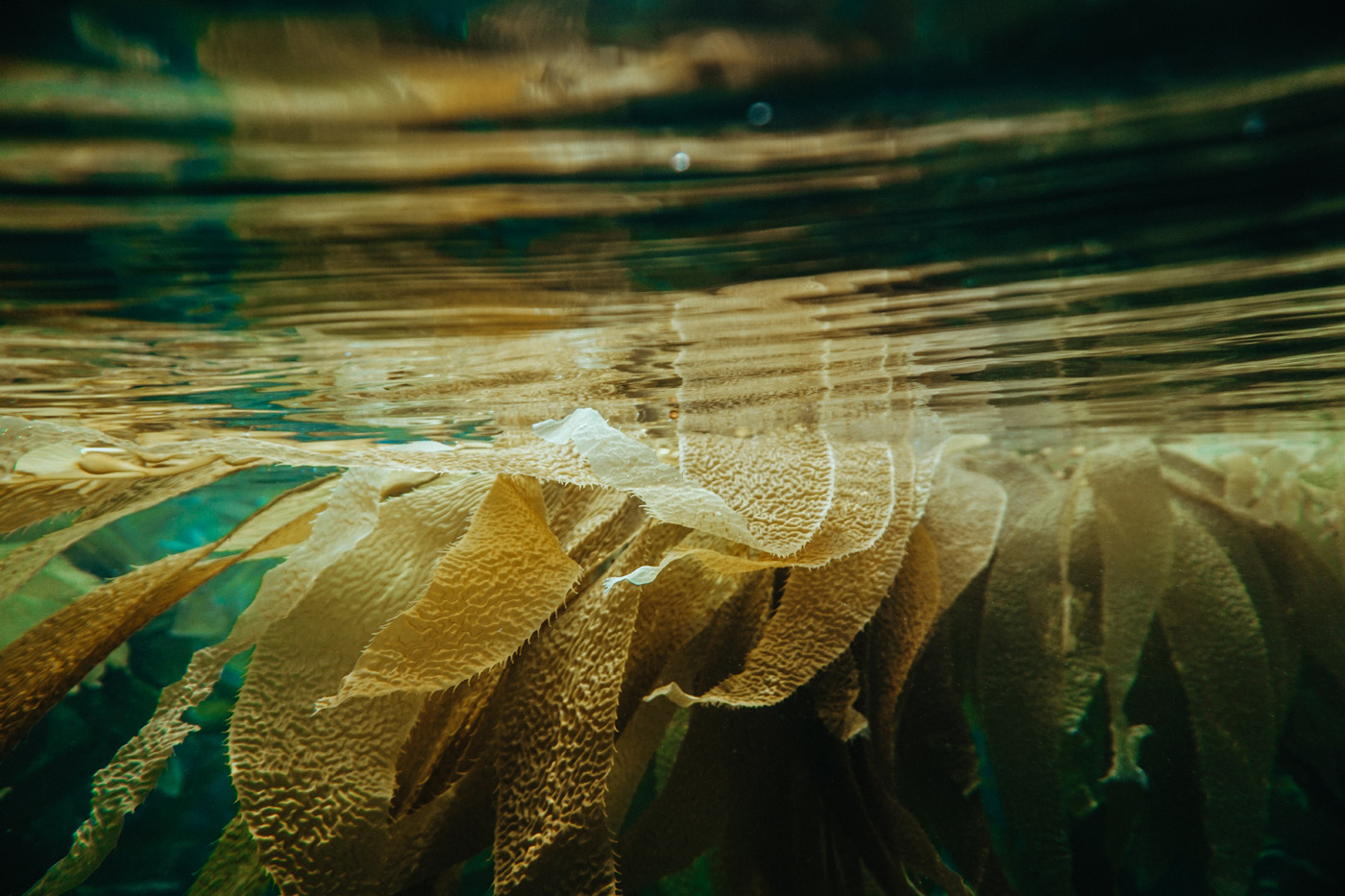
Giant Kelp
One of the fastest growing and largest algae, giant kelp (Macrocystis spp.) grows around the world and can be found on the west coast of North America. It is commonly found in the subtidal zone at depths of ups to 100 ft. (30m). Incredibly, the frond can grow up to 150 ft. (45m) in length and has wrinkly blades attached to a single stipe via a yellowish-green air-filled sac. The blades are an olive green to brownish color. Kelp is high in antioxidants and, like most seaweed varieties, supplies abundant iodine along with trace minerals that promote bone density, regulate blood sugar levels, and reduce blood clotting. Researchers have also studied its ability to lower the risk of cancer, including those of the breast and colon.
To harvest, cut the top half of the frond while leaving the lower half intact so that the fronds and blade can regenerate. You can harvest from a boat or kayak at low tide — or on foot during the spring low tide and during the full or new moon. Alternatively, collect fresh kelp after a storm when it has washed ashore. Do not harvest during and after spawning from May to June. Giant kelp is a highly versatile seaweed and can be eaten raw, blanched, dried, picked, boiled or fried. Get creative!
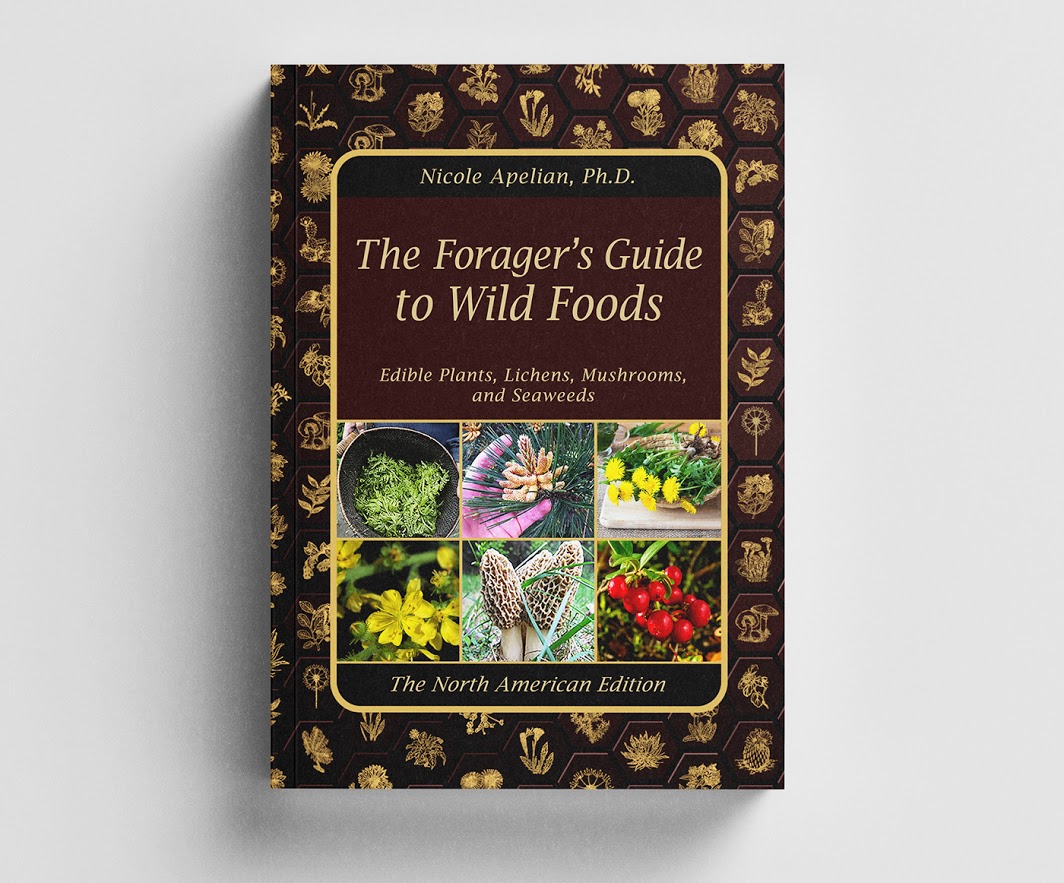
Dive Deeper into Wild Foods
Interested in learning more about the different types of seaweeds, along with over 400 medicinal and edible wild foods? My book, The Forager’s Guide to Wild Foods: Edible Plants, Lichens, Mushrooms, and Seaweeds is for you! This wild food guide covers a wide-range of plants across North America and each entry has an introduction, a range map, edible uses, common medicinal uses, poisonous look-alikes, a description of the flowers and leaves for ID, high-resolution color photos, harvesting instructions, and a simple recipe.
Wishing you many days of abundant and happy foraging!
Nicole Apelian

